Coming Soon ...
6.3
Milk (replacer) feeding schedule
Level 3 - Extension Workers, Input & Service Providers
Introduction
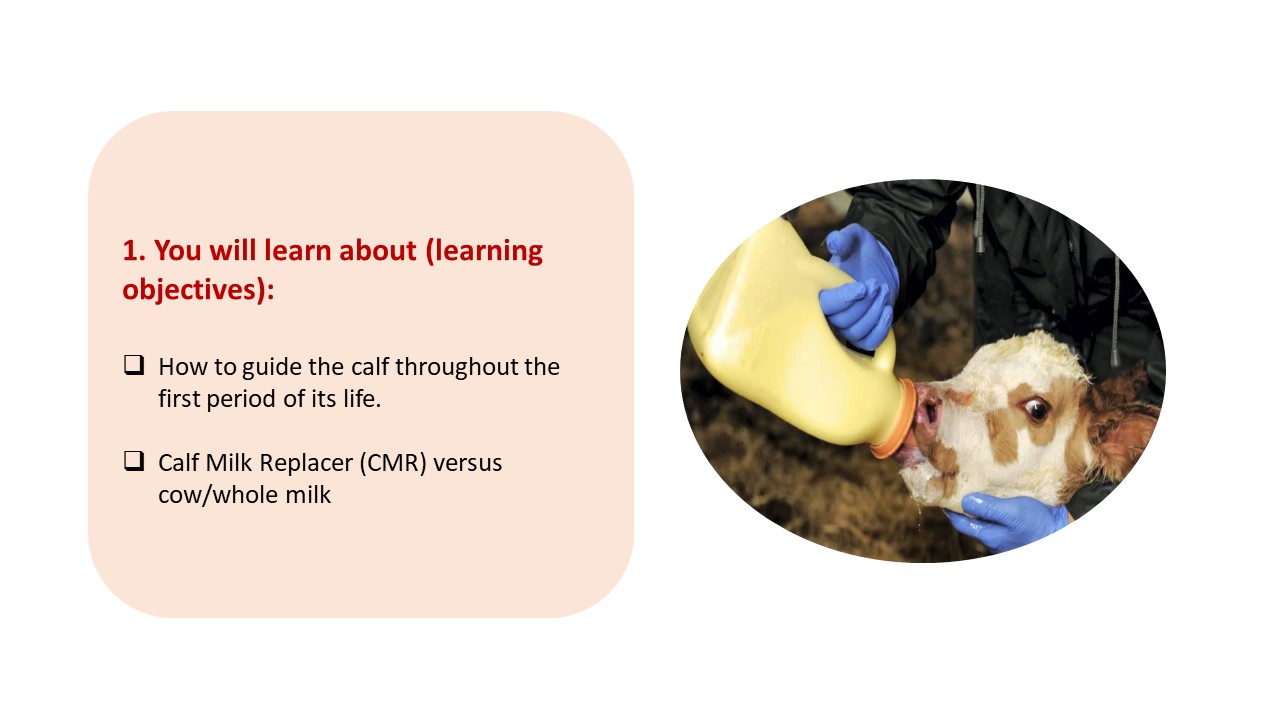
1. You will learn about...
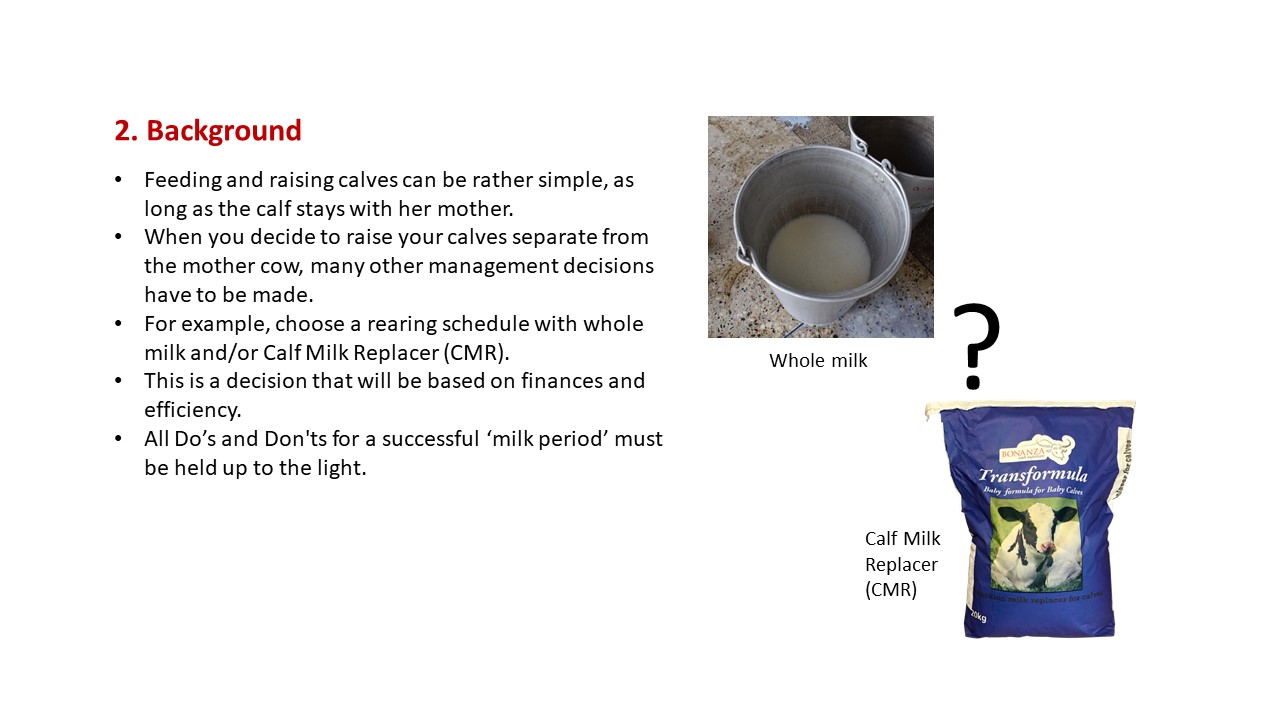
2. Background
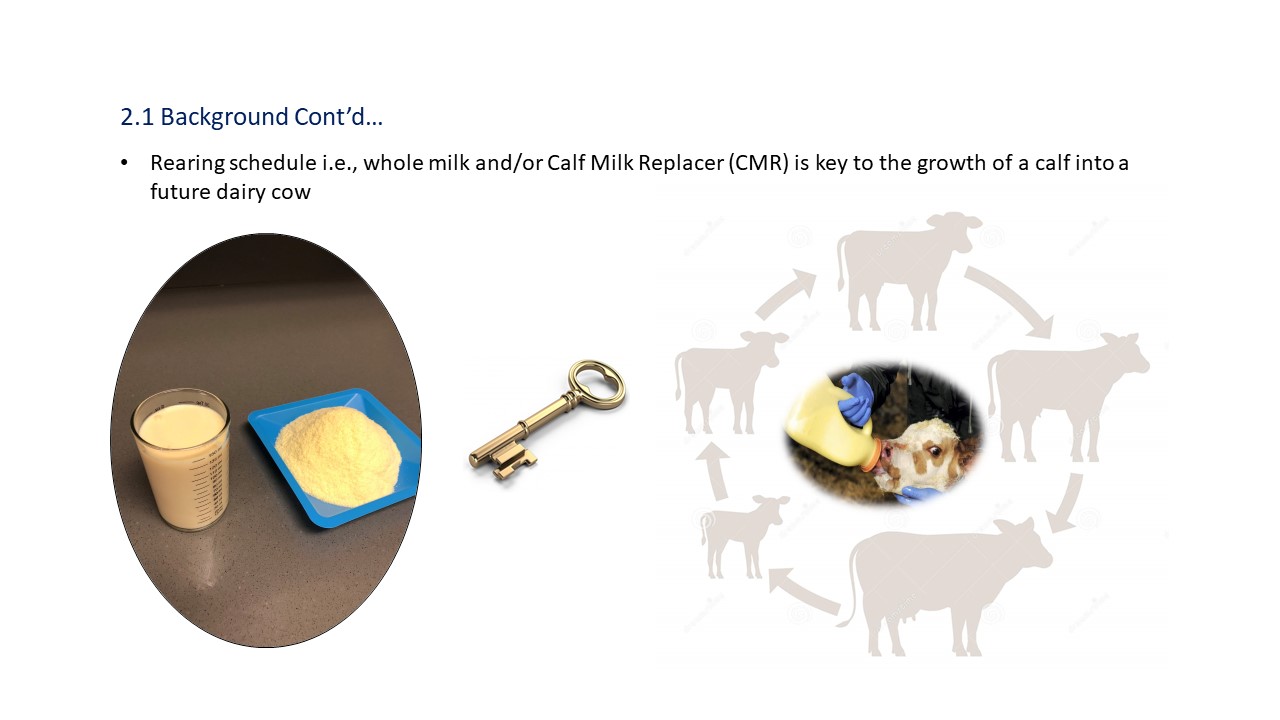
3. Background cont...

4. Cost analysis: CMR vs cow milk
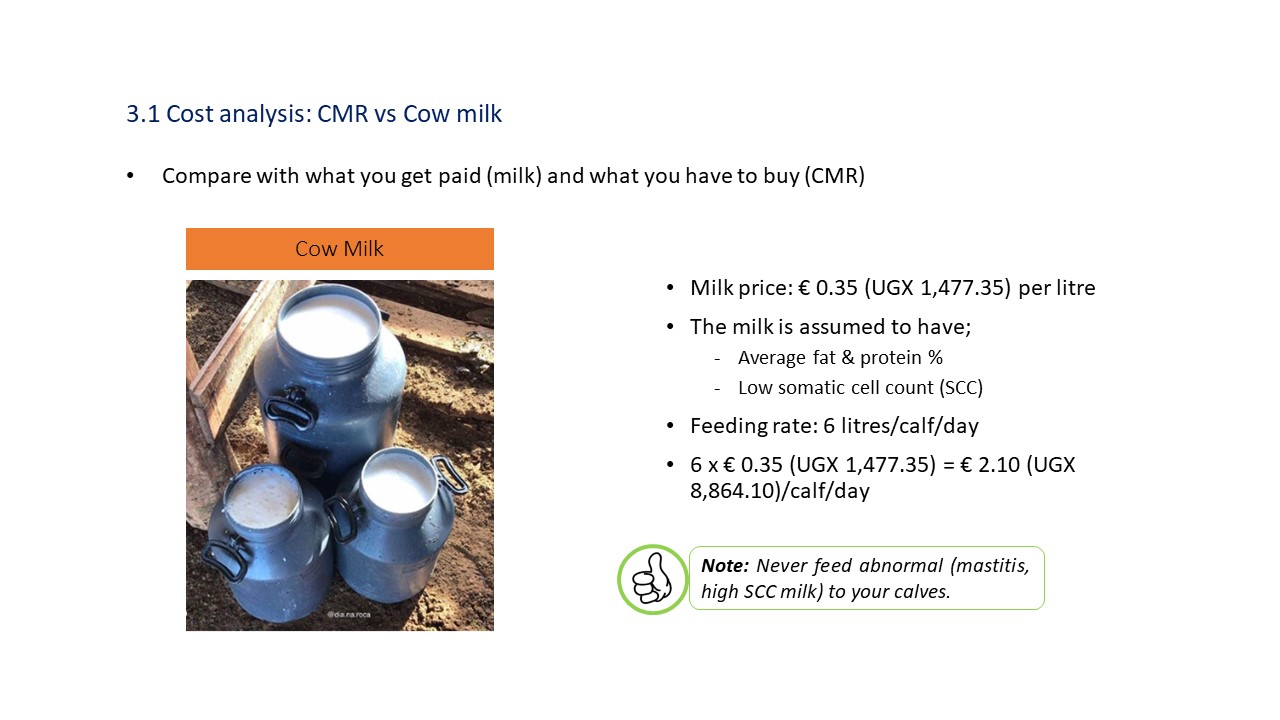
5. Cost analysis: CMR vs cow milk cont...
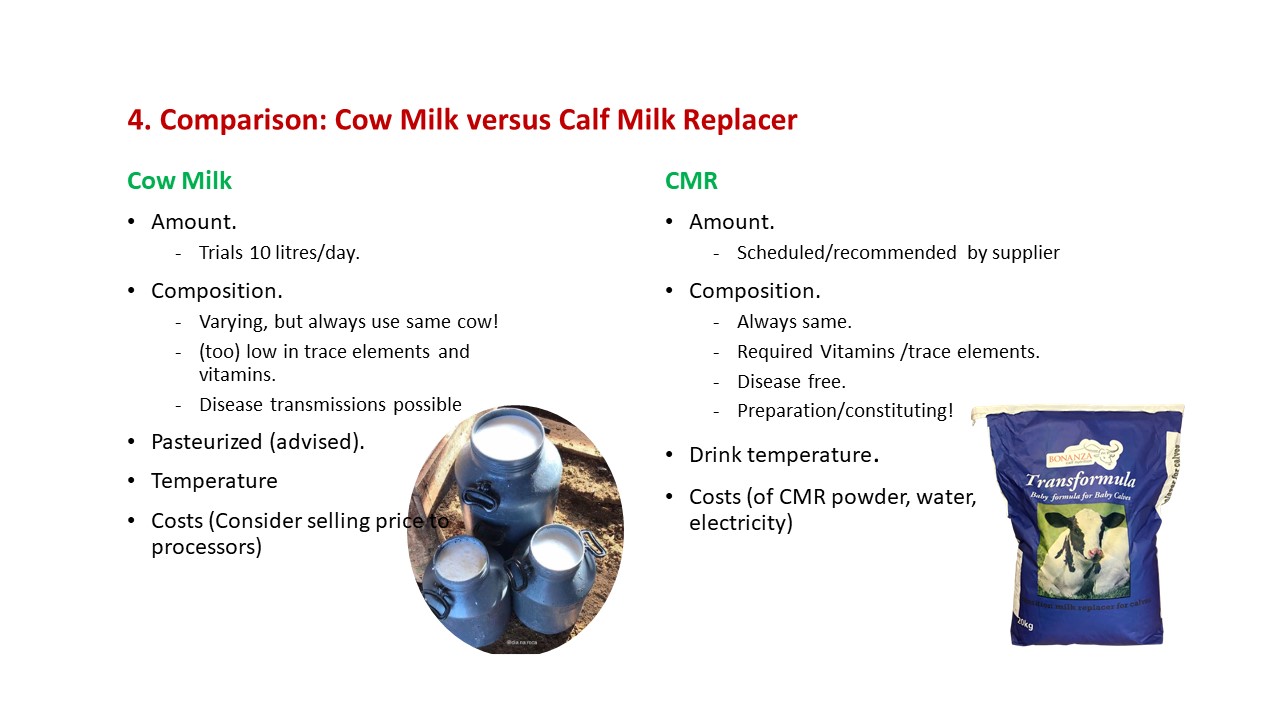
6. Comparison: cow milk vs calf milk replacer
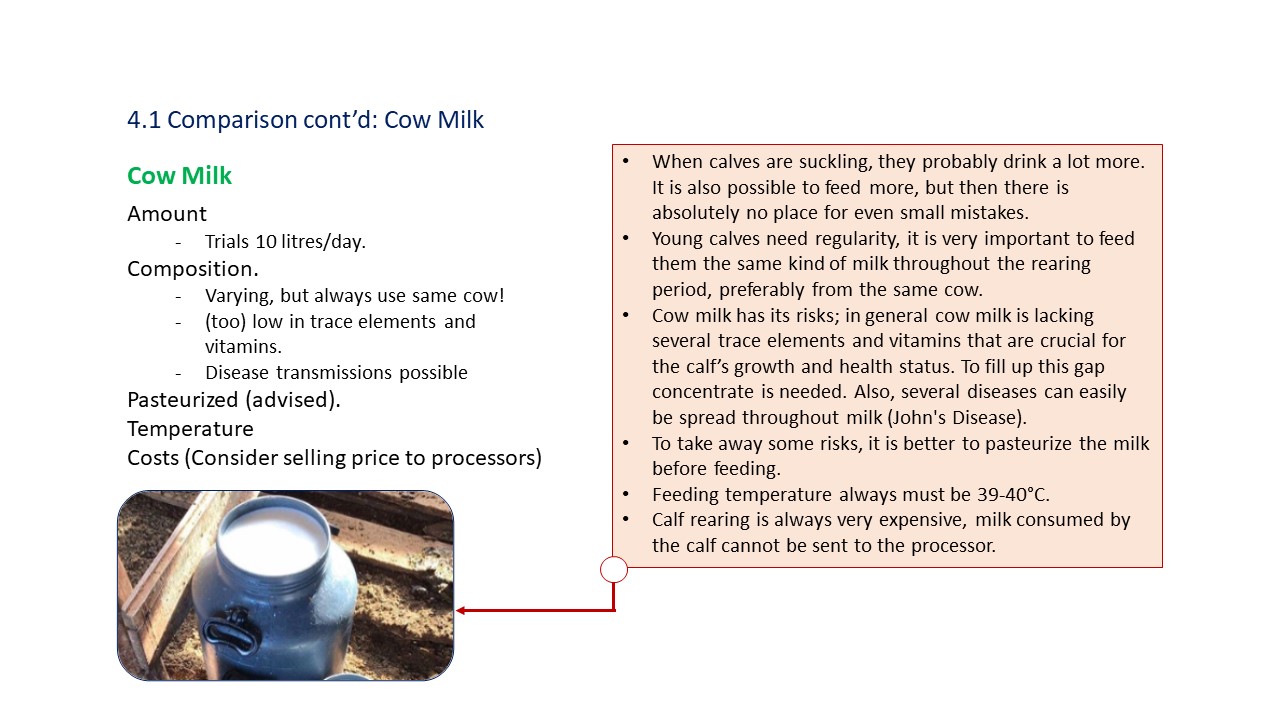
7. Comparison: cow milk vs calf milk replacer cont...

8. Comparison: cow milk vs calf milk replacer cont...
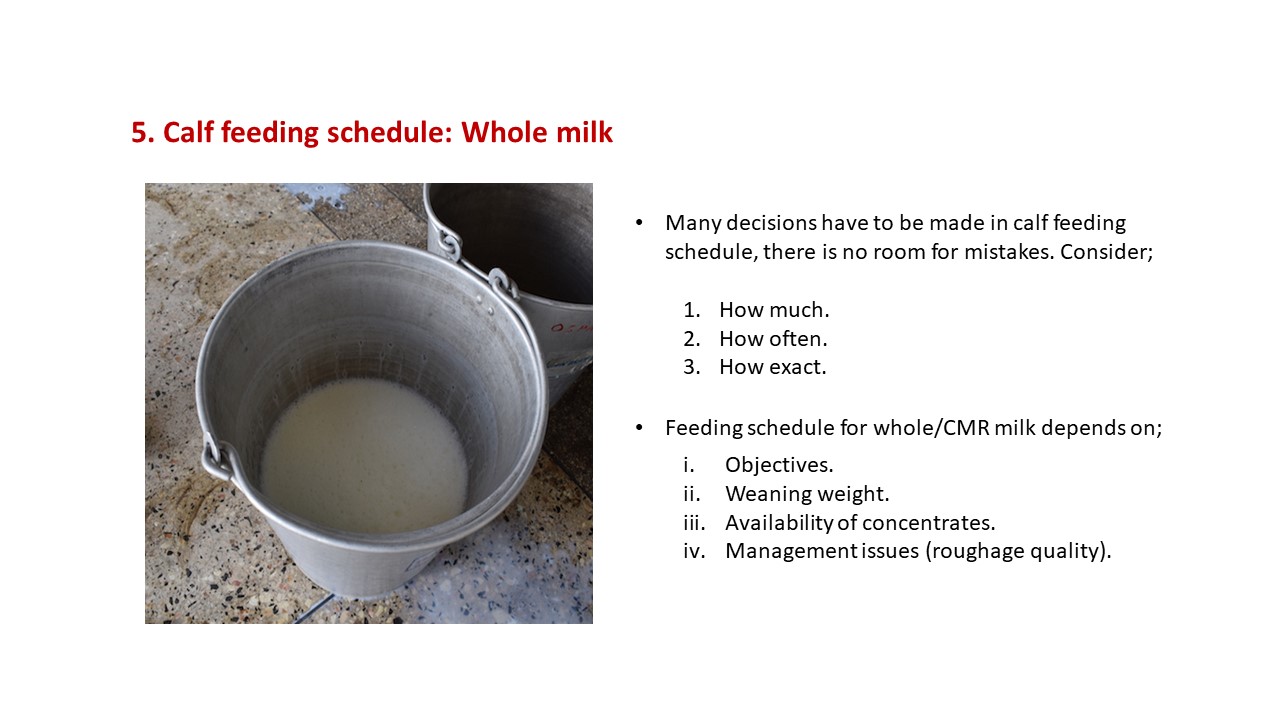
9. Calf feeding schedule: whole milk

10. Example of a feeding schedule
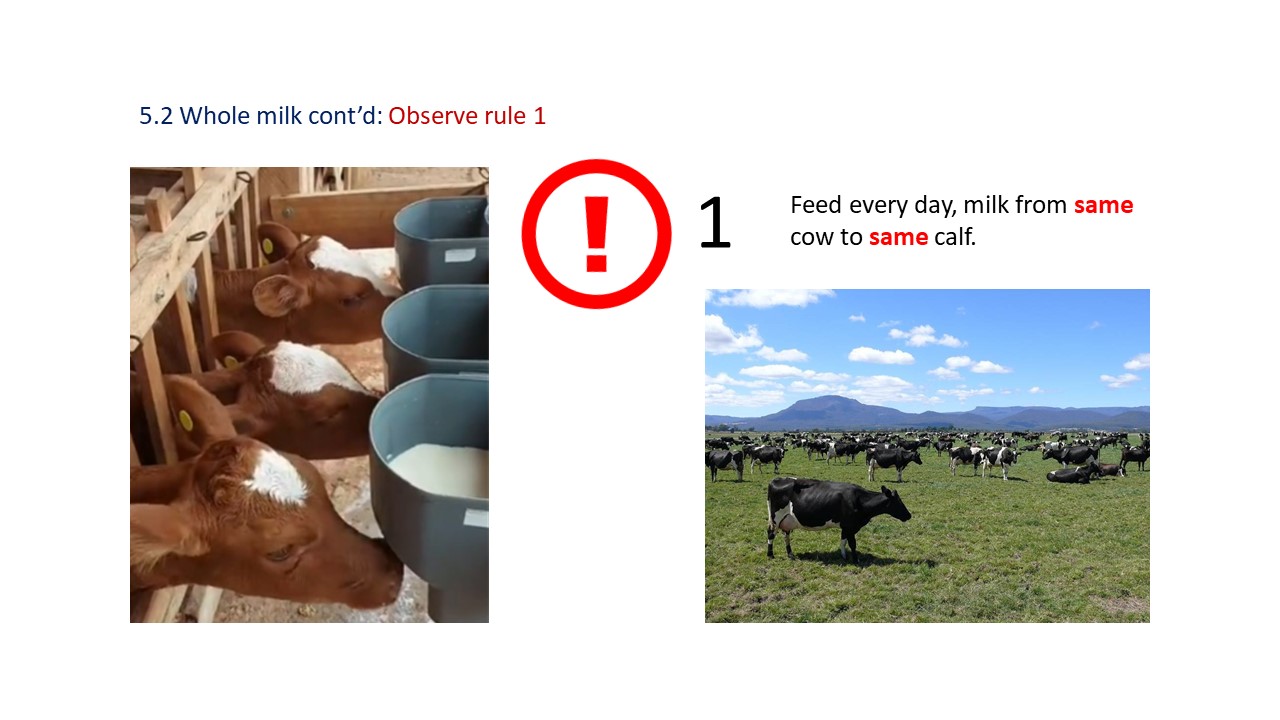
11. Observe rule 1

12. Observe rule 2
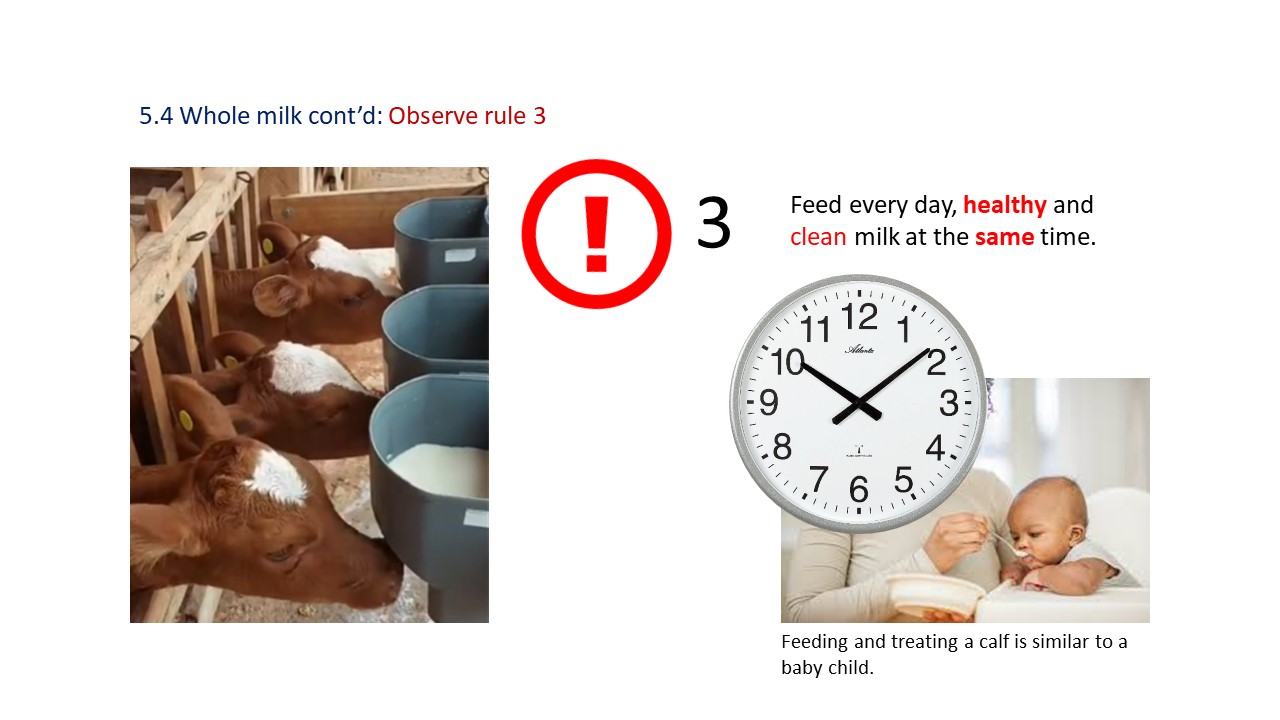
13. Observe rule 3
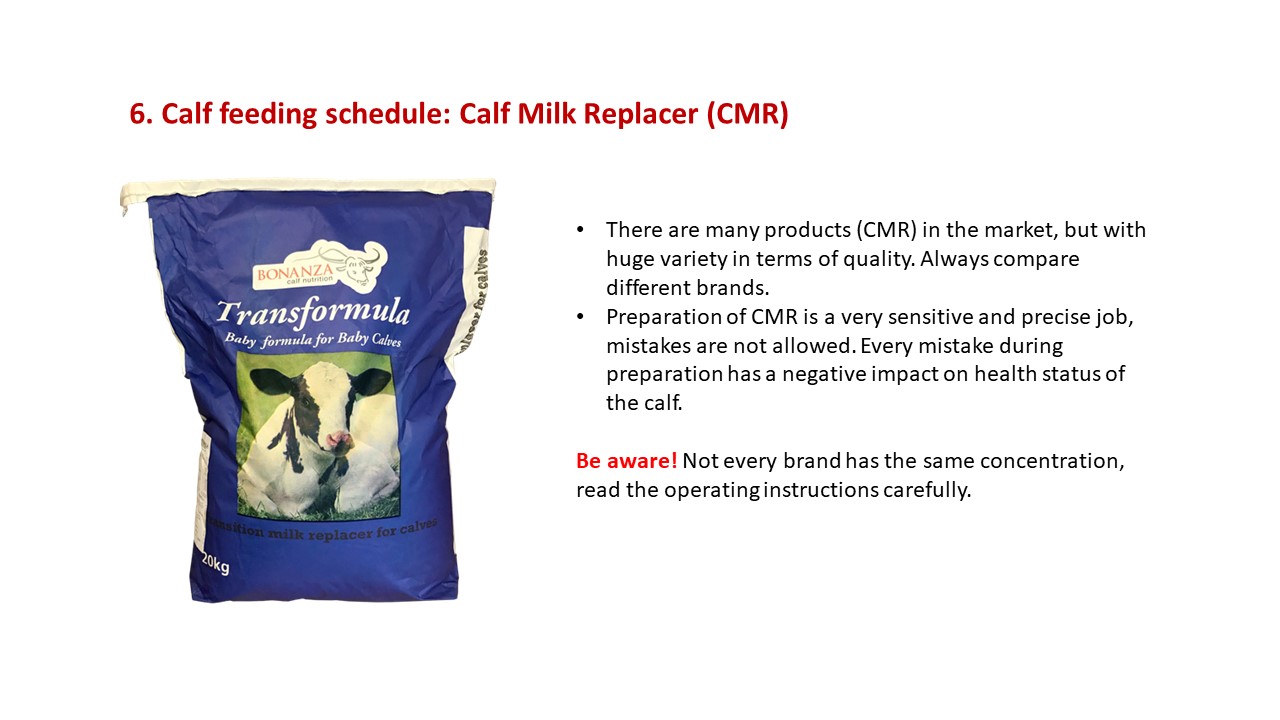
14. Calf feeding schedule: calf milk replacer (CMR)

15. General rules
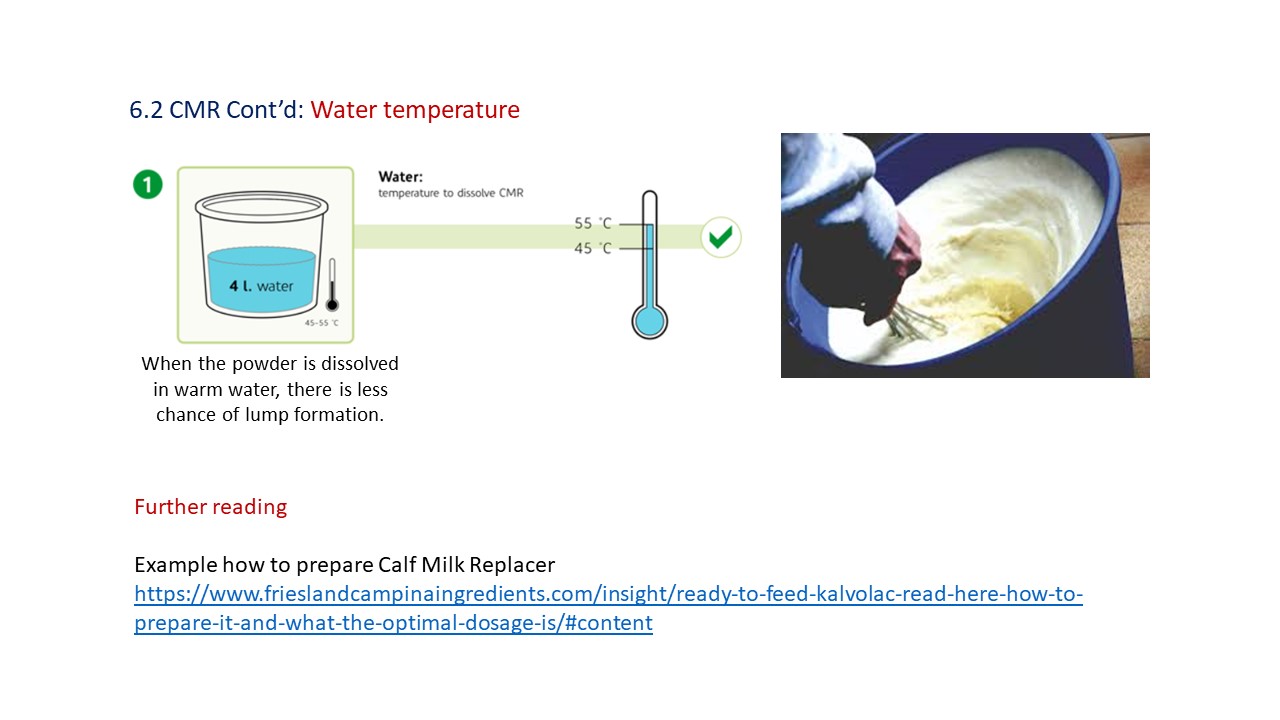
16. Water temperture
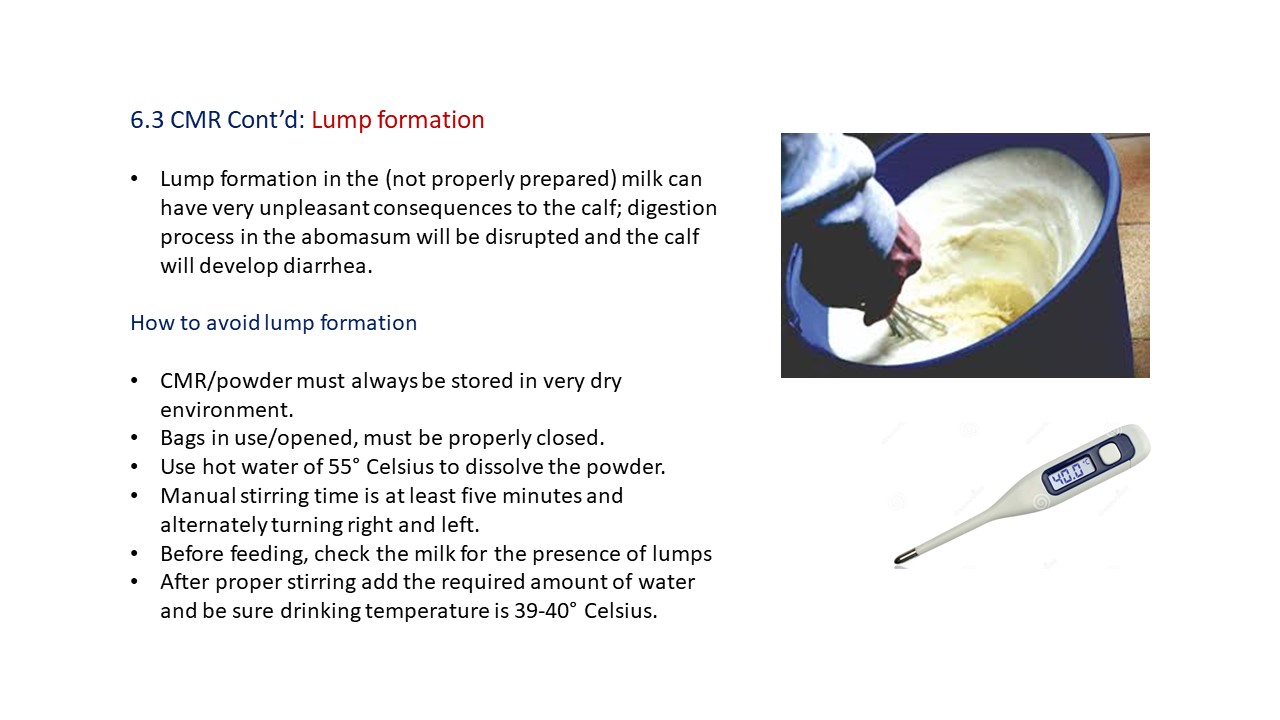
17. Lump formation

18. Concentration/dosage of CMR powder

19. Concentration/dosage of CMR powder

20.Drinking temperature (cold milk)
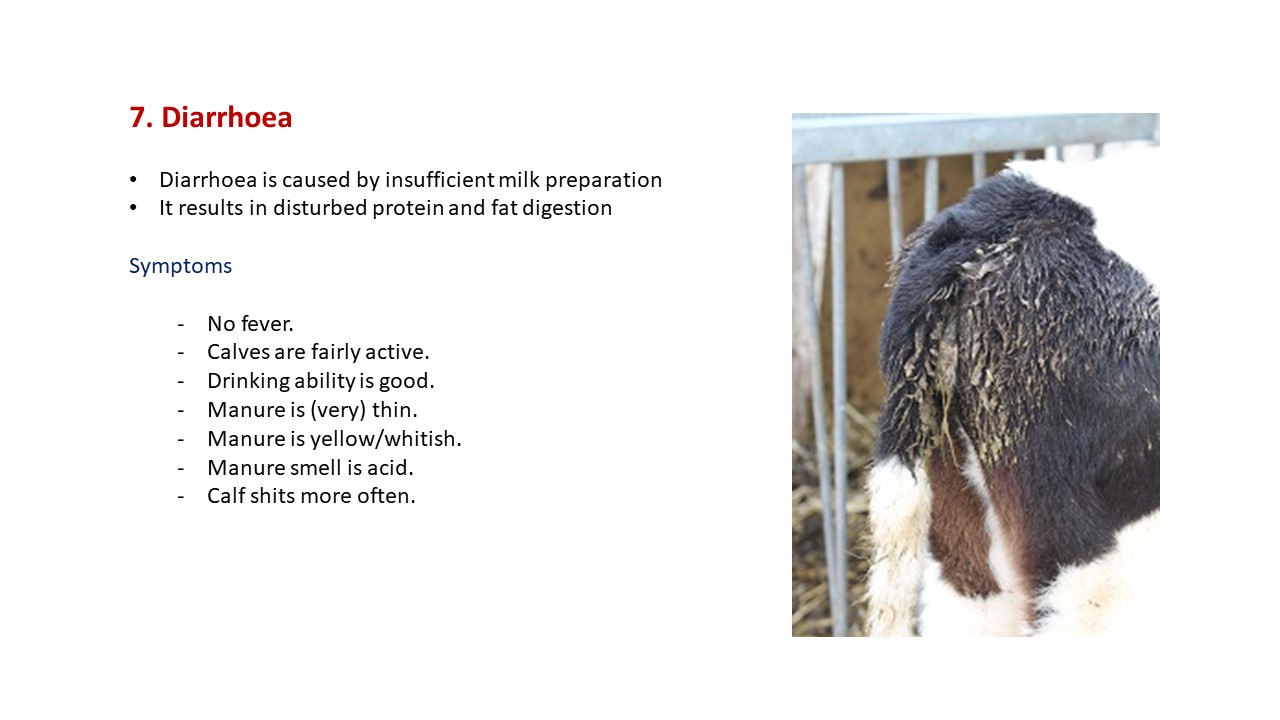
21. Diarrhea

22. Diarrhea cont...

23. Summary: Take home message






















